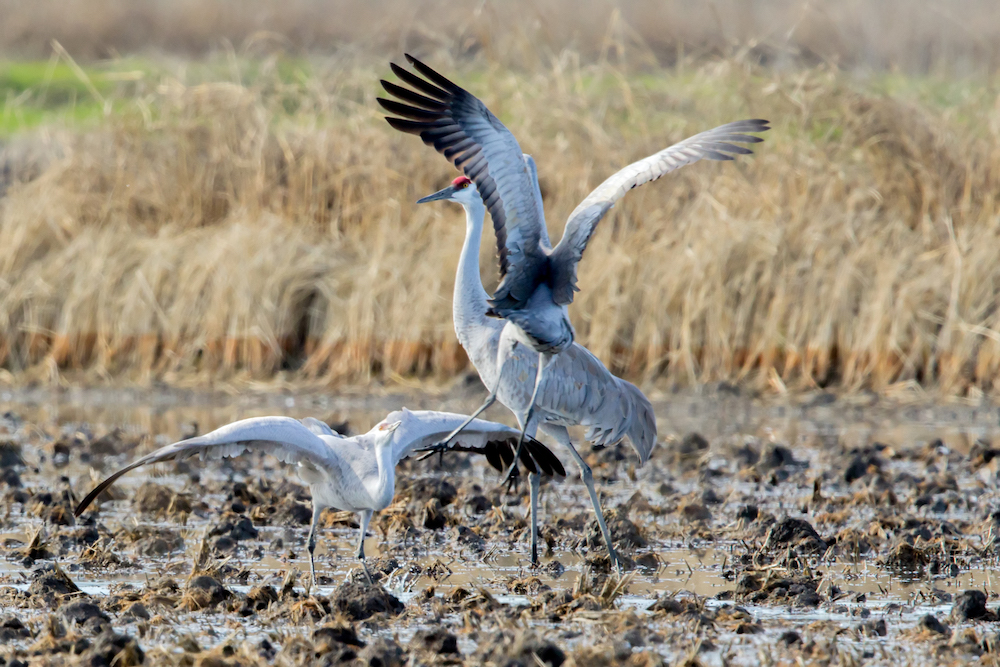Fall Icon of Rice Country
By Luke Matthews
There are a number of sights, sounds, and smells that come with the changing season this time of year. However, for me there are two distinct sounds that let me know fall is near: The calls of Greater White-fronted Geese at night and the unmistakable bugle call of Sandhill Cranes in the early mornings and evenings. The call of the Sandhill Crane has a distinct and ancient quality to it, and it gets me excited about the cool and rainy fall weather.

Sandhill Cranes, like many of the other migratory waterbirds that winter in the Central Valley, do not spend the entire year here. Although, there are a small number that breed in North Eastern California, Nevada, and Oregon, many of these birds travel up to the northern reaches of our continent and breed in Canada, Alaska, or the Arctic. During the fall and winter months Sandhill Cranes can be found scattered throughout the Sacramento Valley, utilizing rice and other agricultural fields for foraging and roosting habitat.
The best way to appreciate these birds is to find a location where they roost (spend the night) and wait there at dusk. As the sun is setting, these large birds with wingspans over five feet will come gliding into the fields. Sandhill Cranes here in the Sacramento Valley are mostly found on private lands, farms, and ranches. One good viewing location is the Llano Seco Unit in Butte County, run by the U.S. Fish & Wildlife Service. Additionally, by traveling a little farther south there are publicly accessible areas that hold thousands of cranes all winter, such as the Consumes River Preserve and Staten Island. If you have never witnessed the awe-inspiring sights and sounds of thousands of Sandhill Cranes returned to their roost sites at sunset, I highly recommend it.
Photo Credit: Leslie Morris
Luke Matthews is the Wildlife Programs Manager for the California Rice Commission






